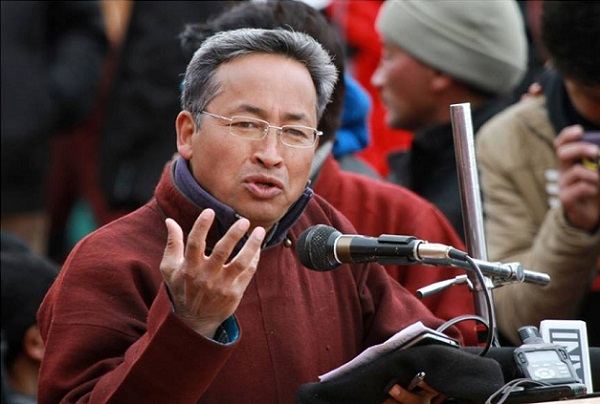In a novel use of innovation, Indian Army would take help from real-life Phunsuk Wangdu, Sonam Wangchuk, to settle one of its persistent border problems, cold weather. Indian Army is fascinated about the pre-fabricated solar heated mud huts which are developed by the engineer-turned-innovator Sonam Wangchuk.
These pre-fabricated solar heated mud huts are eco-friendly and don’t require much heating during the winters in Ladakh. Wangchuk’s home is also in Ladakh, which is one of the coldest mountain deserts of the world. Sonam Wangchuk is known for his eco-friendly innovations. He designed SECMOL campus that runs on solar energy and uses no fossil fuels for cooking, lighting or heating.
In the movie ‘Three Idiots, the character played by Amir Khan was based on Sonam Wangchuk. Sonam Wangchuk has said that Indian Army is also showing interest in his innovation. He also informed that a successful prototype has been already built and the Army is interested in at least 10, 000 such structures.
While speaking at a function of State Skill Department organized by the state of Jammu and Kashmir, Wangchuk stated that he plans to install a plant in Ladakh region. Solar passive structures are in itself not a new innovation.
However, new thing is that these structures are movable, pre-fabricated and can be easily and quickly assembled on the spot and provide solutions to meet the Army’s shelter needs and requirements. The cost of heating would be nil. Even if the temperature outside the hut is minus 20 degree Celsius, inside temperature of the hut will be 20 degree Celsius that too also without any heating.
Sonam Wangchuk further elaborated on the structure in an ET interview, “This is going to get rid of all the pollution caused by the massive amounts of oil the Army consumes to keep the jawans warm.” He also added, “We are doing several more prototypes. It will be scaled up. I don’t think the Army has formulated a policy but they have shown keen interest and are paying for the prototypes.” The army would pay Wangchuk for construction of all prototypes. The plant in Ladakh will be under the Alternative Mountain University, which Wangchuk is in the process of establishing. “Materials will be fabricated in the plant for a whole year and assembled on the spot in summer when the weather is fine. One hut will take just two weeks to be set up.” Wangchuk further added, “The Chinese too have made inquiries about such structures. This can be used in Tibet and different parts of Central Asia. We have to wake up to the challenges of climate change.”
This is going to be an important innovation for the Indian Army. It would not only protect them from extreme, treacherous cold climate of Ladakh, it would also protect them to some extent from several diseases caused by Ladakh’s High altitude environment. Ladakh faces severe connectivity problems because of its extreme climatic conditions and remote habitations. A huge amount of money from is spent on transporting diesel, kerosene and even fire-woods from remote areas to Ladakh. All this process is very expensive as well as the net result of the burning of firewood and diesel contributes to air pollution in the fragile Himalayan ecology. Approaching to an innovator and accepting new innovations also shows open-mindedness of the Indian Army. It is ready and committed to contribute to sustainable development. This will also save a lot of money which can be spent on modernization of the Army.
